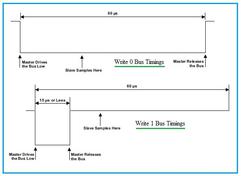M-Bus vs. Wireless M-Bus: Key Differences Explained
Advertisement
This article clarifies the distinctions between M-Bus and Wireless M-Bus, both prevalent communication standards used for reading utility metering devices. We’ll cover the basics of each and highlight their key differences.
In a typical utility system, we have two main components: reader devices and the metering devices themselves. Let’s delve into each technology.
M-Bus: The Wired Standard
Originally conceived as a two-wire serial communication bus standard, M-Bus has become a well-established technology. The CENELEC Technical Committee oversees its standardization. Relevant standards are outlined below.
The M-Bus protocol operates with a four-layer model, encompassing:
- Physical Layer
- Link Layer
- Network Layer
- Application Layer
Wireless M-Bus: Cutting the Cord
Unlike its wired counterpart, Wireless M-Bus (often abbreviated as WM-Bus) leverages radio frequency signals, typically operating in the 868MHz and 169MHz bands. This eliminates the need for complex wiring layouts, offering greater flexibility in deployment.
The Wireless M-Bus standard (EN13757-4) defines the communication between metering devices and other devices, such as data concentrators or readers.
The Wireless M-Bus protocol stack comprises:
- Physical Layer
- Data Link Layer
- Application Layer
- Security Layer
Different physical layer modes (R2, S1, S1m, S2, T1, T2) are available, each supporting different data rates to suit varying application needs.
M-Bus vs. Wireless M-Bus: Key Differences
The following table summarizes the key differences between the two technologies:
| Specifications | M-Bus | Wireless M-Bus |
|---|---|---|
| Standard | EN13757-2 (Physical and Link Layer) EN13757-3 (Application Layer) | EN13757-4 |
| Frequency of operation | Wired way of transmission, no RF frequency used | 868 to 870 MHz SRD band is used, N-mode works at 169MHz |
| Communication speed or data rate | 300 to 9600 bps | Different modes support different data rates: R2 (4.8 Kbps), S1/S1m (32768 Kbps), S2,T1,T2(support 100Kbps) |
| Distance coverage | 1000 meter using single twisted pair, upto 250 slaves can be connected | supports 1000 meter (in 868 to 870MHz) |
| Bit encoding (used at physical layer) | Bit 0 uses +36V(for master transmission), <1.5mA (for slave transmission) Bit 1 uses +24V(for master transmission), 11-20mA (for slave transmission) | Different modes uses different encoding. All will have format consisting of preamble followed by sync word followed by encoding(either manchester or 3 out of 6 encoding) |
| Security layer | Not needed | Needed as the information travels wirelessly. Originally DES is used, Now AES 128 is employed |
Advertisement
 RF
RF


